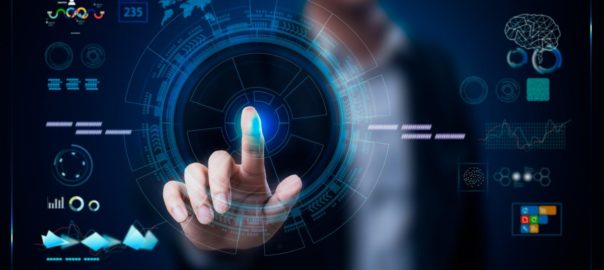In an era where data is as valuable as currency, safeguarding it with the utmost security and efficiency is the main task. Virtual Data Rooms (VDRs) have evolved from simple data repositories to sophisticated platforms that leverage innovative technologies.
These advancements redefine how the sensitive information should be stored, managed, and secured, like during due diligence (e.g. https://australian-dataroom.net/deals/data-rooms-for-due-diligence/). From AI integration and blockchain technology to virtual reality and sustainable practices, let’s delve into the revolutionary capabilities reshaping the future of VDRs.
AI Integration in Virtual Data Rooms
Artificial Intelligence (AI) technology has significantly the capabilities of virtual data rooms. AI integration streamlines operations, enhances data sorting mechanisms, and ensures superior data management.
- Automated data organization. AI algorithms categorize and tag files, enabling users to find relevant documents quickly.
- Enhanced security measures. Through pattern recognition, AI can identify potential security threats, providing proactive protection.
- Efficient data analysis. AI tools analyze documents to extract valuable insights, facilitating due diligence and decision-making processes.
This integration not only increases efficiency but also significantly reduces the margin for human error, setting a new standard for performance of virtual data rooms.
Blockchain Technology for Immutable Security
In the digital world, securing sensitive information stands as a paramount concern. The integration of blockchain technology into virtual data rooms signifies a transformative approach to achieving data integrity and security enhancement. Here’s an in-depth look at how blockchain redefines security within VDRs.
Decentralized Storage Solutions
By distributing data across a vast network of computers, blockchain eliminates single points of failure and reduces the risk of data breaches. This structure makes VDRs more resilient to cyber attacks, ensuring sensitive information remains safeguarded against unauthorized access.
Immutable Audit Trails
The implementation of blockchain in VDRs introduces immutable audit trails, establishing a transparent and unalterable record of all document interactions. Each transaction is permanently etched into the blockchain, offering a clear, chronological history of data access and modifications. This level of accountability is crucial for regulatory compliance and governance, as every action taken within the VDR is verifiable.
Permissioned Access Control
Blockchain enables the creation of sophisticated permission structures, granting access to documents or data only to users who possess the necessary credentials. This selective accessibility ensures that sensitive information is shared securely and efficiently, maintaining confidentiality while facilitating collaboration.
The Intersection of Virtual Reality and Security
Virtual Reality (VR) technology is revolutionizing how users engage with information in virtual data rooms.
- Immersive data rooms. Virtual reality integration is changing the way people interact with information in data rooms. Immersive data rooms powered by VR technology turn two interfaces into dynamic three dimensional spaces.
- Collaborative tools. Teams from around the world can gather in a data room engaging with and discussing data in times as if they were all physically present, in the same place.
- Enhanced training simulations. Through realistics simulations, users can be trained on various security protocols and potential threat scenarios, equipping them with the knowledge and reflexes to act decisively in real situations.
This integration not only elevates data collaboration but also raises enhanced user experiences to unprecedented levels.
Sustainable Practices in Innovating Virtual Safeguards
The integration of sustainable practices in the development and operation of virtual data rooms is becoming more and more popular nowadays.
- Improved energy efficiency. Advanced eco-friendly security algorithms and infrastructure enhancements reduce the energy usage of data centers that host virtual data rooms.
- Less environmental impact. By decreasing the necessity for data storage and transport VDRs help in lowering greenhouse gas emissions.
- Supporting development objectives. VDR providers are aligning their practices with sustainability targets to ensure positive environmental contributions.
These approaches not guarantee the friendliness of virtual safeguards measures but also resonate with the growing demand for green technologies.
Emerging Innovations: Shaping the Future of VDR Capabilities
Virtual data room technology world is constantly expanding. A lot of technological advancements in VDRs promise to redefine the concept of how data is managed, ushering in a new era of efficiency and security. The outlook for the future VDR capabilities appears optimistic as advancements in technology are set to provide security, efficiency and intelligence in optimizing data sharing processes.
Quantum Cryptography
It is a technology that uses the rules of quantum mechanics to safeguard data. This tech makes sure that the data kept in VDRs is shielded by physics laws making it nearly impossible for access or decryption. With emerging innovations of quantum computing, incorporating quantum cryptography into VDRs can greatly enhance their security setup.
AI-Driven Predictive Analytics
Another groundbreaking development is the application of AI-driven predictive analytics within VDRs. This innovative technology leverages intelligence to predict users needs and automate routine data management tasks.
By examining patterns in how data’s accessed and used, AI algorithms can predict what information a user might need next, making the process of navigating through vast amounts of data more intuitive and efficient. AI driven predictive analytics not only enhances efficiency within VDRs, but also improves decision making by offering timely and pertinent information.
Incorporation of IoT Devices
The integration of Internet of Things (IoT) devices with VDRs introduces a new possibility of data collection and analysis. IoT devices continuously gather real time data from sources transmitting this information directly to vDRs for analysis and action.
This seamless interaction between devices and VDRs allows businesses to make faster accurate decisions based on data. Moreover the capability to integrate real time data into decision making processes boosts organizations responsiveness and adaptability.
Conclusion
The world of Virtual Data Rooms is changing quickly due to progress in AI blockchain tech, virtual reality and a focus on sustainability. These technologies not only redefine the capabilities of VDRs but also enhance security, user experience, and environmental responsibility. Looking ahead, the continuous incorporation of new document management system trends promises to revolutionize how we handle and protect our data.

